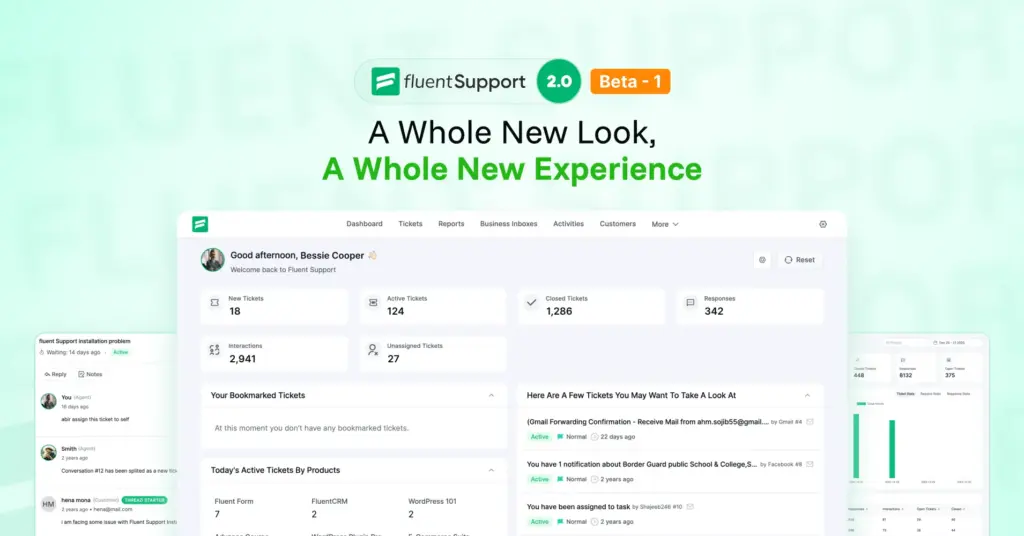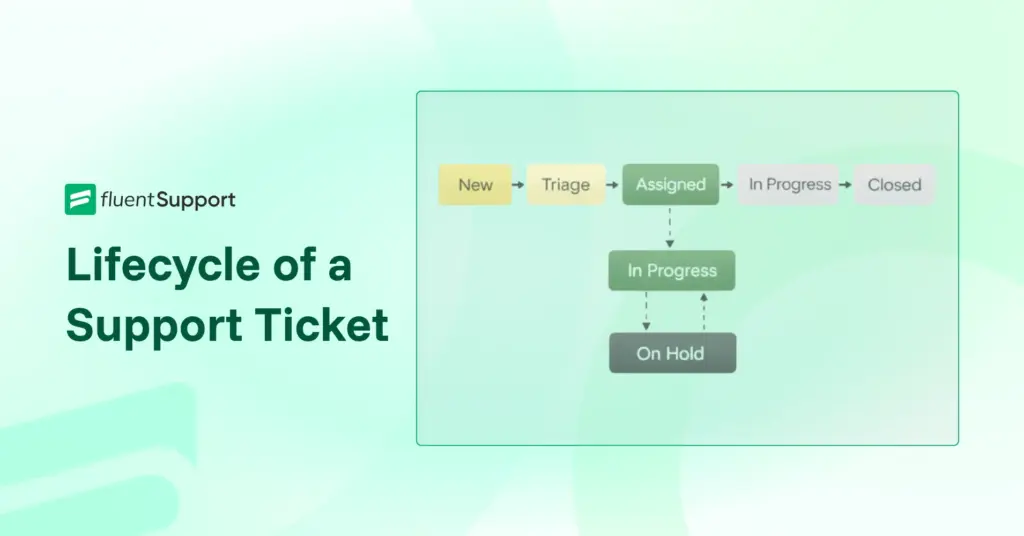
10 Customer Service Myths: Busted
By Rasel Siddiqe
August 12, 2024
Last Modified: January 6, 2026
Customer Service has been around long enough to have its own world of myths and legends. Some are factual, others were heard once and repeated ever since.
The pitfall is that many service teams and managers still hold on to these myths like gospel. It’s high time to put these myths to bed and begin an era of customer service based in reality.
I have to admit, customer service myths, although easily found in office break rooms and board meetings, are difficult to find written down.
So in an offer to provide valid context we’ll examine the factual notions that gave birth to these myths and find the reality in them.
Let’s check out the myths and what we can do to change them.
10 Popular Myths in Customer Service
- Low service requests is a “good thing”
- Price over service
- “Speed” is all that matters
- Marketing >> Customer Service
- “Satisfied” customers don’t churn
- All customers are the “same”
- Surveys are “all” you need
- Customers “only” want to talk to real humans
- Jargon gives you “authenticity”
- AI will “replace” humans
Now let’s check out how they started and if they’re true.
Low service requests is a “good thing”
This myth started from a pretty harmless notion if you think about it. You’ve set up your service system, and welcome customer queries. So, if the issues aren’t coming in, it must mean customers are satisfied with your offering. Or, there may not be any issues to seek help with.
In reality this sort of thinking is naive to say the least. First thing to understand here is, no product/service on earth is 100% effective.
Similarly, not all customers are on the same level. So, considering you have a significant customer base, it’s statistically impossible for all your customers to have a unanimous reaction towards your product.
If you aren’t getting queries it’s more likely that your service process simply isn’t effective enough for customers to bother. In which case you ought to find where your customer service is lacking, instead of celebrating zero service interactions.
Price over service
There used to be a time when pricing was the differentiating factor for businesses. Offering something cheaper than the competitor always requires risks and innovation to make it feasible.
But more and more this edge is getting blunt down by remarkable customer service. Instead of treating it as just another business function, Customer Service is now a feature.
And businesses that follow this are doing it for the right reasons too. Just take a look at what Business Wire says about it.
“In a stronger economic environment, seven in ten Americans (70%) are willing to spend an average of 13% more with companies they believe provide excellent customer service.”
Taking this into account, it’s obvious customers will put service above pricing and that’s reason enough to put this myth to rest.
Speed is all that matters
Don’t get us wrong here. Speed is a crucial factor when it comes to offering stellar service. But it’s by no means the only thing that matters.
The pitfall of believing speed is all it takes is that service teams end up devaluing customer emotions.
It’s a bit complex from a theoretical POV. Being fast and being empathetic are sometimes conflicting positions to be in. And within that complexity lies the solution to this myth.
It’s not just speed, it’s not just empathy. It’s a mix of both. Do it fast, sure, but do it with empathy as well.
Consider an extreme case where you run a funeral service or any kind of event management. Yes, being fast is crucial. However, you also have to consider the emotional state of the customer as well. A grieving customer will appreciate a calm and humane response over technical speak. It’s just how humans are, full of emotions and passion.
Marketing >> Customer Service
Investing in marketing is something the C-suite tends to value more than customer service. This belief stems from the flawed notion that customer service is a cost center.
Well, the fact that customers value service over price makes this notion obsolete to say the least. The truth is customer service is the retention center for your business.
Another fact to consider here is that acquiring new customers (primarily a marketing objective) costs 5-25x more than retaining customers (a service objective). Although the source of this stat is debatable, the key thing to remember here is your niche.
Some niches will have a lower cost ration for retention and acquisition. So in reality, investing in customer service is equivalent or at least on par with spending 5x more in marketing depending on the sector.
However, investing in customer service will provide equitable returns regardless of niche or industry.
Satisfied customers don’t churn
This is a horror story right out of our fellow Customer Success teams day. Customer Success works to enable customers to get the highest value from using a product or service.
They’re usually the ones responsible for post-sales care and onboarding. Customers usually get a success score that signifies their reliance on the product.
The nightmare is that customers, with seemingly high success scores, still churn.
Holding on to this, if you consider satisfaction with service as a metric to measure churn probability, you’re in for a big surprise.
Even with high satisfaction ratings a customer can still churn. There’s no prefixed indicator that can alert you beforehand. You know about it only when it’s too late.
Just looking at satisfaction scores isn’t nearly enough. You have to follow-up and offer incentives actively, to reduce the probability of churn.
All customers are the same
This is probably one of the most dangerous myths to trust. There are no businesses that cater to only one kind of person. Whenever you’re developing a marketing campaign the TG profile is the first thing to look at.
I haven’t heard of any marketing team only working with 1 kind of target profile. It’s usually a few profiles based on key identifying factors.
Even there it’s not a hundred percent accurate. Every customer is an individual with their own aspirations and expectations. It’s hard to find consensus even among the same TG profile.
Customer service teams need to embrace this fact. While understanding the buyer’s profile is great, it’s not wise to lock into one sort of profile and expect every customer to be the same as you are hoping for. Treating each interaction on it’s own facts is the wiser call
Surveys are all you need
Customer service teams live for the random survey. The survey metrics are the real evaluation for their efforts. Or so they believe.
Surveys, while important, rarely show the clear picture. There’s a bunch of well researched reasons as to why. For instance,
- Poor-quality responses
- Survey fatigue
- Unintentional bias in Survey questions
- Lack of anonymity compromising honesty
- Difficulty in identifying outliers
Instead, to get the real picture, it’s better to hold customer interviews and community webinars. This provides customers the opportunity to voice their concerns, without making it feel routine and impersonal.
Customer emotions are a key factor for establishing a sustainable relationship. They are a key part of their outlook of your business. Satisfaction surveys fail at capturing this valuable take.
Customers “only” want to talk to real humans
The ongoing obsession with creating chatbots that mimic human conversation indicates that while people value human interaction, their views on chatbot support are more nuanced.
Research such as a Salesforce-commissioned study iterates that “58% of customers say emerging technologies like chatbots and voice assistants are changing their expectations of companies.”
Obviously, many users prefer instant chatbot responses over waiting for a human agent, but they also want easy access to a human if needed.
Chatbots are seen as innovative and useful for basic tasks, though they should never pretend to be human. Users appreciate the speed and convenience of chatbots, but also recognize their limitations.
A similar notion thrives about self-service as well. Customers prefer to DIY more than you might think. Offering easy-to-access resources for self-service can go a long way in achieving customer satisfaction.
Jargon gives you “authenticity”
Customer service does often take the technical route. It’s a dubious position for customer service agents. Mainly because, they can never be sure of the technical competence of a customer.
Some might be power users while others might just be your grandmas. You can never know, even grandma might know more than meets the eye.
So how do you communicate with customers of varying expertise?
Many agents think regurgitating technical jargon makes the conversation more authentic and elicits trust in the customer.
Nothing could be far from the truth. As a service agent the first thing is to be a good communicator. Using tech-heavy jargon defeats that purpose.
The only thing that shows authenticity is clear communication. Assess the customer’s expertise and only communicate as much as is relevant. Let the pros’ handle the technical stuff.
AI will “replace” humans
Artificial intelligence has undoubtedly revolutionized customer support, no one’s denying that. Despite this advancement, the notion that AI will completely replace human agents is misguided, to put it mildly.
While AI can handle basic inquiries and offer quick, scalable solutions, it falls short in replicating the nuanced skills required for effective human interaction—such as understanding context, detecting emotions, and adapting to unique situations. These aspects of customer service are crucial and often difficult to automate.
Moreover, the reality is that customers still value and often prefer human interaction, especially when dealing with more complex or sensitive issues.
Studies have shown that while AI can augment the customer service process, it works best in tandem with human agents, rather than as a replacement.
The future of customer service lies in a collaborative approach where AI handles the repetitive, straightforward tasks, freeing up human agents to deliver the empathy and personalized support that only they can provide.
Wrapping Up
Customer service is a game of empathy, communication and priority. But more importantly, it’s more than just a business function. It’s at the core of what sets you apart from the competition.
Be rid of these customer service myths that make customer service sloppy, and follow the path of factual decision-making. At the end of the day, while it’s not an exact science, data can help you more than any so-called “rule of thumb”.
Until next time, happy serving!












Leave a Reply